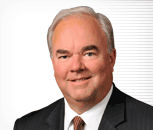FR and safety apparel will continue to be a strong area of growth.
Bill Evans, President and Chief Operating Officer of AmeriPride Services Inc., talks about how workwear industry is becoming more specialized in serving specific vertical markets and the benefits of sourcing from vendor partners, in an exclusive interview with Fibre2Fashion Correspondent Ilin Mathew.
Synopsis:
Headquartered in Minnetonka, Minnesota, AmeriPride Services Inc. is recognized as one of the largest uniform and linen supply companies in North America. The key industries served by the company include Industrial (Oil and Gas, Manufacturing, Auto), Food and Beverage (Restaurants and Bars), Healthcare (Clinics) and many others.
Prior to his elevation as President and CEO, Evans served as Chief Operating Officer with AmeriPride. He had earlier served for 24+ years with Pepsi Cola Company operating entities in various capacities.
Excerpts:
In terms of consumption, how do you perceive the differences between Canadian and the US consumers?
No real difference. Some of the key industries we serve vary by region and the specific products may vary, but in the end, consumers want a quality product at a value price with great service.
What are the benefits in sourcing textile and garment products from vendor partners rather than manufacturing it?
We actually do both. This allows us the benefit of learning about new products or innovations in our market. The key advantage to sourcing from vendor partners is having the best product available and no (or very little) inventory liability.
Work wear uniforms, including flame resistant (FR) apparel, are normally not produced in mass quantities as other apparel. How does this affect the price and other factors?
This is not entirely correct. In fact, the production process is the same as followed for standard goods sold in the retail market.
How do you think the trade incentives, including North American Free Trade Agreement (NAFTA) and Canada-United States Free Trade Agreement (CUSFTA), help in improving the trade relations with the two countries?
In short, manufacturing is going to countries that have duty agreements with both countries. As a company that operates in both countries, we need a vendor that can service us in both countries.
How important is outsourcing apparel production to developing countries, and do you see production coming back to the US, especially in view of the US government entering several trade agreements, like the Trans-Pacific Partnership (TPP)?
If cost remains the key factor in sourcing commodity apparel, I don’t see it coming back to the US. However, we have made a move to sourcing more apparel from companies that manufacture closer to home (Mexico, Dominican Republic, Haiti) to help improve speed and flexibility in our supply chain.
How has the American uniform or work wear industry changed in the past decade or so?
The industry is becoming more specialized-- servicing specific vertical markets, such as industrial, manufacturing, oil and gas, automotive, food and beverage, and many others. As a company, we need to have a very good understanding of customer needs, specific to their markets.
Are there any specific trends for uniforms in the US and Canada that you are excited about?
These days, the standard uniform is no longer navy shirts and navy pants. Consumer-facing businesses want their employees wearing uniforms that tell a unique brand story. Uniforms have to be consistent with their brand and the image they would like to portray to their own existing and prospective customers. Our company offers uniforms from casual to formal and everything in between, and in a variety of colors and styles, to fit our customers’ needs.
In addition, new government regulations are creating a new demand for FR apparel. This trend is a key area of growth for our company. In addition to providing the apparel, we also know how to clean the garments so they retain their FR qualities.
Which countries lead in linen and towels production? Do you foresee any shift in linen production in the future?
Today we source linen and towels from China, Pakistan, Cambodia and India. Linen is a fabric and labor driven product and will likely continue to be so in the future.
How is the market for uniforms faring in the US? What are the main factors driving the industry?
Employment in manufacturing and industrial business is a key driver. As manufacturing continues to grow, so will our business. A lot hinges on what happens with the economy, but we were able to weather the recession by finding operational efficiencies and economies of scope and scale in our supply chain.
Even as the economy recovers, customers are looking for quality product at a value price with great service. That never changes. We feel that if we have superior quality and service, our customers will pay for it.
Do you think that flame resistant apparel and safety wear play a vital role in sustainable textile production? Can you elaborate?
Today, most of our key vendors use US-produced FR fabric. Until we have assurance that an imported FR fabric has been tested properly and the companies have proper insurance, there is too great a risk for us to look at sourcing from other countries.
FR is a key area of growth for our company and will continue along with Oil and Gas industry growth and ever tightening governmental safety regulations.
How do you foresee the prospects of uniform and work wear segment in next five years?
I expect uniforms to continue to be a strong part of the workplace. Industrial, automotive, service industries, restaurants and many others will continue to be strong areas for us as our customers remain focused on their image and brand. FR and safety apparel will continue to be a strong area of growth. In addition, rental uniforms are getting stronger in the health care industry.

